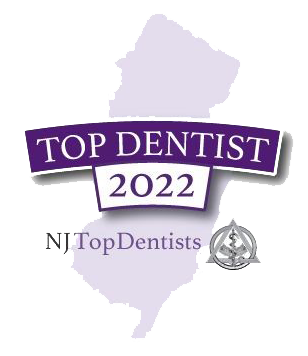
Orthodontic Treatment for TMJ Disorder

When you think of orthodontics, you may not realize that they can be used for the treatment of temporomandibular joint (TMJ) disorder. But depending on the root cause of TMJ problems, orthodontics can be a powerful tool to provide much-needed relief from painful symptoms, while improving the appearance of crooked or crowded teeth.
Read on as Dr. Ivan Stein of the Headache & TMJ Center of New Jersey explains what to know about orthodontic treatment for TMJ dysfunction.
When Are Orthodontics Useful for TMJ?
There are quite a few factors that can cause or contribute to TMJ problems. For instance, the joint can become injured in a traumatic accident, or the cartilage cushioning the bones of the joint can degenerate due to arthritis.
Many cases of TMJ dysfunction are attributed to pre-existing problems with the bite, which is the way the upper and lower teeth fit together when the jaw is closed. Abnormal alignment of the upper and lower teeth, which is known as malocclusion or simply a “bad bite,” affects the position of the lower jaw and the surrounding muscles that help keep it stabilized. A bad bite can also affect the disc of cartilage that provides padding between the jaw and skull bones of the joint.
Symptoms of TMJ caused by malocclusion include headaches, pain in the jaw, face, neck or back, dizziness, earaches or ringing of the ears. Sometimes pain medication or muscle relaxers are prescribed to help soothe these symptoms, but they do not address the root cause of the problem.
Orthodontic treatment can change the lives of patients with TMJ disorder due to malocclusion by treating the root cause of the problem (not just the symptoms). Orthodontics move the teeth into the ideal position, fixing the bite and relieving tension on the TMJ and surrounding muscles. This alleviates the uncomfortable symptoms of TMJ while creating straighter, more attractive teeth.
Treatment Details
If Dr. Stein determines that orthodontics are appropriate for your case, generally the first step is to take X-rays and other records to study the way your upper and lower teeth fit together. An orthodontist then determines the best bite for your jaw joints and muscles. You will wear braces for a period of time to gradually shift your teeth into the desired position for a balanced bite.
Contact Our Team Today
Dr. Stein and the team at the Headache & TMJ Center of New Jersey are focused on addressing the root cause of your TMJ problems — not simply masking the symptoms with a quick fix. To consult with Dr. Stein about your case, please request a consultation at our office today.

